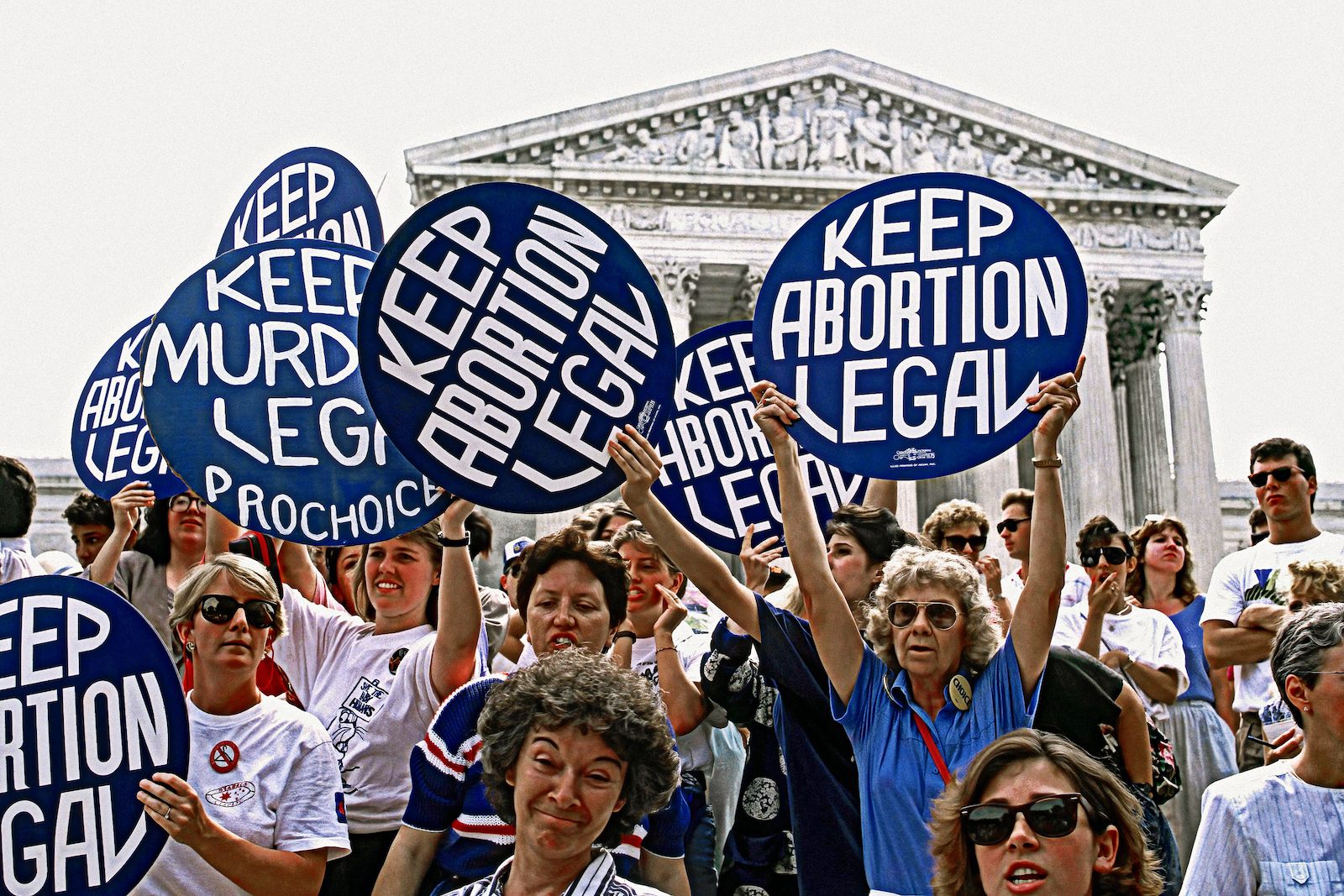
Tracing how Republicans Became so Absolutist on Abortion
The U.S. Supreme Court‘s reversal of Roe v. Wade placed abortion at the heart of American political debate. Democrats were outraged — a sentiment that drove Democrats to the polls during the recent midterm elections. Meanwhile, Republicans celebrate while watching states pass restrictive abortion laws. Today’s bitter divisions, however, didn’t always dominate politics. So, how did we get here and why did conservative Republicans embrace such absolutist positions on abortion?
The Republican Party adopted pro-life positions as a desperate attempt to revive conservatism. By exploiting women’s bodies, Republicans believed they could siphon more political attention. And as ridiculous as it sounds, the plan worked. Broadly, anti-abortion gave way to the conservative community’s identification with conservative Christianity and family values.
Before the 1970s, abortion wasn’t squarely divided across party lines. It was a non-partisan issue concerning individual privacy and was mainly discussed in a medical setting.
According to Anna North, Republicans supported “abortion at about the same rate as Democrats.” In 1967, when he was California’s governor, Reagan loosened abortion restrictions. Republican Nelson Rockefeller similarly supported abortion rights in New York when he was governor. The Equal Rights Amendment —which provided a de facto right to abortion — surprisingly passed with 84 percent of Republican support.
“Will the liberals capture the GOP?” asked a right-leaning newspaper in 1975. Conservatism was on the decline. With Democrats controlling the White House since the 1930s and Watergate tainting the Republican brand, young conservatives wanted to separate themselves from the “Old Right.” A fresh issue was necessary to save a dying party. At the same, the giant National Right to Life Committee also emerged, seeking to regulate abortion and women’s bodies. So, it’s no surprise that Republicans would use the anti-abortion movement to cauterize the growing wound in their party.
Mildred Jefferson, a Republican political activist, promised to intertwine the Right to Life Revolution with New Conservatism. She aimed to harness the political forces of anti-abortion Evangelical and Catholic voters. Other political strategists turned abortion into a tool — one that shifted blocks of voters from the Democratic Party to Republican. This was successful, to say the least. For one, grassroots anti-abortion groups grew across the country. Republicans endorsed Feminists for Life and strategically spoke out against abortion. And, the Hyde Amendment, which prevented Medicaid-funded abortions, passed, signaling a new era for politicizing abortion.
Anti-abortion policies gradually became more extreme. The Federal Abortion Act of 2003 banned late-term abortions and extraction. Fast forward around 20 years later, and today, Republicans plan to fully ban abortions. This policy evolution reflects a wider radicalization of the Republican Party. It must be stressed that planning is significantly different than cobbling together the votes in Congress, passing a full ban, and convincing a weary president to actually sign the legislation. Plans don’t often come together.
Indeed, the anti-abortion movement captured and reinvigorated the Republican Party. But the movement was only a prelude to the New Right’s campaign.
In effect, anti-abortion provided a blueprint for the new conservative motto. By encouraging birth and motherhood, the new anti-abortion stance painted the Republican Party as “pro-family.” Pro-family, though, wasn’t only about family. Republicans grew worried about a loss of respect for traditions. So, pro-family meant a reversion to conventional sexual, marital, and economic norms. Laws limiting same-sex marriage, opposing contraceptives, and even banning critical race theory also fell within the realm of “pro-family.” This campaign redirection triggered a surge in social conservatives and mobilized new voters.
Today, conservatives like Florida Governor Ron DeSantis assert that “Parents’ rights have been increasingly under assault around the nation” and proceed to punish speech about sexuality. Remember that this Floridian pro-family policy stems from anti-abortion. The anti-abortion movement shook the foundation of conventional conservatism by involving it in the social aspects of society. While conservatism previously focused on economics and government moderation, the anti-abortion ideology set off a social chain reaction, pushing the Republican Party into modern culture wars.
Owing to its religious roots, anti-abortion captured the attention of many groups. While the rejection of abortion was initially led by Catholics, Southern evangelicals hopped onto the anti-abortion train. The political potency of anti-abortion proponents thus shifted from Catholic states to Southern evangelical regions. This had grave consequences. While most Catholics disapproved of abortion, they supported anti-poverty programs, maternity insurance, and government-funded daycare. Southern evangelicals didn’t. As economic conservatives, evangelicals rejected abortion as well as all programs that supported poor pregnant women. This was a recipe for disaster. Progressive Catholics were forced to sacrifice otherwise liberal positions to identify with the new anti-abortion party — the GOP.
This seismic religious shift isn’t without precedent. It is a continuity of religious zeal in American politics. Between the 1870s and 1920s, conservative Christians fervently fought for alcohol prohibition — a liberal, regulatory idea. Religious conservatism had transformed party politics.
Anti-abortion Biblical beliefs prompted religious enthusiasm within the Republican Party. It laid the groundwork for a party unified by faith. But while religious, abortion was never meant to be a political issue. It is a private concern. Republicans were mistaken to think they could control women’s lives without resistance.
The best hope for women and abortion rights advocates lies in voting. While Republicans are set to take control of the U.S. House of Representatives next year, if Democrats do well politically and win back control, they can finally codify federal abortion rights. With a heavy majority supporting at least some abortion rights, it’s possible — as shown by Kansans. Americans just need to make noise.
The birth of New Conservatism was precipitated by the anti-abortion movement. How will it end? Given today’s booming dissent, abortion should cause its downfall too. Yet the overturning of Roe v. Wade sends that prospect far into the future. During the 2022 midterms, Republicans watered down their anti-abortion rhetoric. They understood that anti-abortion is a minority view but will never give it up. It has shaped the contours of modern conservatism. It should be stressed that even with toning down calls for forcing rape victims to carry pregnancies to term, for example, voters largely understood where they stood on abortion.
It’s a shocking thought that abortion was once a non-partisan issue. The moment the anti-abortion movement introduced abortion’s partisan face to conservatives, though, politics spiraled. Now, the 1970s decision to conflate anti-abortion and conservatism profoundly impacts every facet of the Republican Party and daily life. Here’s some food for thought: America is the only Western nation that experienced such a tectonic political shift in opposition to abortion. Why?

